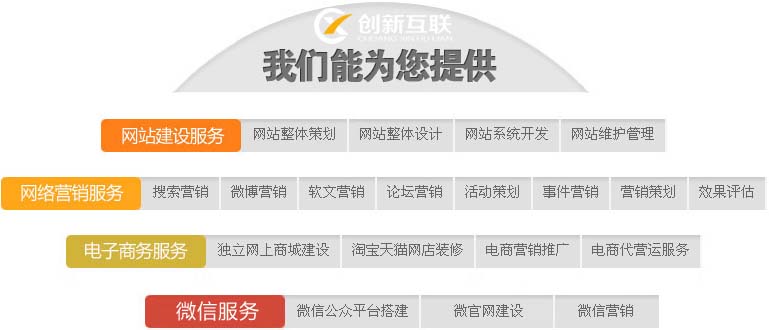re.split,re.finditer怎么在Python3中使用-创新互联
本篇文章给大家分享的是有关re.split,re.finditer怎么在Python3中使用,小编觉得挺实用的,因此分享给大家学习,希望大家阅读完这篇文章后可以有所收获,话不多说,跟着小编一起来看看吧。

re.split re.finditer re.findall
@(python3)
官方 re 模块说明文档
re.compile() 函数
编译正则表达式模式,返回一个对象。可以把常用的正则表达式编译成正则表达式对象,方便后续调用及提高效率。
re 模块最离不开的就是 re.compile 函数。其他函数都依赖于 compile 创建的 正则表达式对象
re.compile(pattern, flags=0)
pattern 指定编译时的表达式字符串
flags 编译标志位,用来修改正则表达式的匹配方式。支持 re.L|re.M 同时匹配
flags 标志位参数
re.I(re.IGNORECASE)
使匹配对大小写不敏感
re.L(re.LOCAL)
做本地化识别(locale-aware)匹配
re.M(re.MULTILINE)
多行匹配,影响 ^ 和 $
re.S(re.DOTALL)
使 . 匹配包括换行在内的所有字符
re.U(re.UNICODE)
根据Unicode字符集解析字符。这个标志影响 \w, \W, \b, \B.
re.X(re.VERBOSE)
该标志通过给予你更灵活的格式以便你将正则表达式写得更易于理解。
示例:
import re content = 'Citizen wang , always fall in love with neighbour,WANG' rr = re.compile(r'wan\w', re.I) # 不区分大小写 print(type(rr)) a = rr.findall(content) print(type(a)) print(a)
findall 返回的是一个 list 对象
['wang', 'WANG']
re.split 函数
按照指定的 pattern 格式,分割 string 字符串,返回一个分割后的列表。
re.split(pattern, string, maxsplit=0, flags=0)
pattern compile 生成的正则表达式对象,或者自定义也可
string 要匹配的字符串
maxsplit 指定大分割次数,不指定将全部分割
import re str = 'say hello world! hello python' str_nm = 'one1two2three3four4' pattern = re.compile(r'(?P\s)') # 创建一个匹配空格的正则表达式对象 pattern_nm = re.compile(r'(?P \d+)') # 创建一个匹配空格的正则表达式对象 match = re.split(pattern, str) match_nm = re.split(pattern_nm, str_nm, maxsplit=1) print(match) print(match_nm)
结果:
['say', ' ', 'hello', ' ', 'world!', ' ', 'hello', ' ', 'python']
['one', '1', 'two2three3four4']
re.findall() 方法
返回一个包含所有匹配到的字符串的列表。
pattern 匹配模式,由 re.compile 获得
string 需要匹配的字符串
import re str = 'say hello world! hello python' pattern = re.compile(r'(?Ph\w)(?P l+)(?P o\s)') # 分组,0 组是整个 world!, 1组 or,2组 ld! match = re.findall(pattern, str) print(match)
结果
[('he', 'll', 'o '), ('he', 'll', 'o ')]
re.finditer 、re.findall
re.finditer(pattern, string[, flags=0])
re.findall(pattern, string[, flags=0])
pattern compile 生成的正则表达式对象,或者自定义也可
string 要匹配的字符串
findall 返回一个包含所有匹配到的字符的列表,列表类以元组的形式存在。
finditer 返回一个可迭代对象。
示例一:
pattern = re.compile(r'\d+@\w+.com') #通过 re.compile 获得一个正则表达式对象 result_finditer = re.finditer(pattern, content) print(type(result_finditer)) print(result_finditer) # finditer 得到的结果是个可迭代对象 for i in result_finditer: # i 本身也是可迭代对象,所以下面要使用 i.group() print(i.group()) result_findall = re.findall(pattern, content) print(type(result_findall)) # findall 得到的是一个列表 print(result_findall) for p in result_finditer: print(p)
输出结果:
123456@163.com
234567@163.com
345678@163.com
['123456@163.com', '234567@163.com', '345678@163.com']
由结果可知:finditer 得到的是可迭代对象,finfdall 得到的是一个列表。
示例二:
import re content = '''email:123456@163.com email:234567@163.com email:345678@163.com ''' pattern = re.compile(r'(?P\d+)@(?P \w+).com') result_finditer = re.finditer(pattern, content) print(type(result_finditer)) print(result_finditer) iter_dict = {} # 把最后得到的结果 for i in result_finditer: print('邮箱号码是:', i.group(1),'邮箱类型是:',i.group(2)) number = i.group(1) mail_type = i.group(2) iter_dict.setdefault(number, mail_type) # 使用 dict.setdefault 创建了一个字典 print(iter_dict) print('+++++++++++++++++++++++++++++++') result_findall = re.findall(pattern, content) print(result_findall) print(type(result_findall))
输出结果:
邮箱号码是: 123456 邮箱类型是: 163
邮箱号码是: 234567 邮箱类型是: 163
邮箱号码是: 345678 邮箱类型是: 163
{'123456': '163', '234567': '163', '345678': '163'}
+++++++++++++++++++++++++++++++
[('123456', '163'), ('234567', '163'), ('345678', '163')]
finditer 得到的可迭代对象 i,也可以使用 lastindex,lastgroup 方法。
print('lastgroup 最后一个被捕获的分组的名字',i.lastgroup)
findall 当正则没有分组,返回就是正则匹配。
re.findall(r"\d+@\w+.com", content) ['2345678@163.com', '2345678@163.com', '345678@163.com']
有一个分组返回的是分组的匹配
re.findall(r"(\d+)@\w+.com", content) ['2345678', '2345678', '345678']
多个分组时,将结果作为 元组,一并存入到 列表中。
re.findall(r"(\d+)@(\w+).com", content)
[('2345678', '163'), ('2345678', '163'), ('345678', '163')]以上就是re.split,re.finditer怎么在Python3中使用,小编相信有部分知识点可能是我们日常工作会见到或用到的。希望你能通过这篇文章学到更多知识。更多详情敬请关注创新互联成都网站设计公司行业资讯频道。
另外有需要云服务器可以了解下创新互联scvps.cn,海内外云服务器15元起步,三天无理由+7*72小时售后在线,公司持有idc许可证,提供“云服务器、裸金属服务器、高防服务器、香港服务器、美国服务器、虚拟主机、免备案服务器”等云主机租用服务以及企业上云的综合解决方案,具有“安全稳定、简单易用、服务可用性高、性价比高”等特点与优势,专为企业上云打造定制,能够满足用户丰富、多元化的应用场景需求。
网站栏目:re.split,re.finditer怎么在Python3中使用-创新互联
本文路径:http://mswzjz.cn/article/hjiji.html